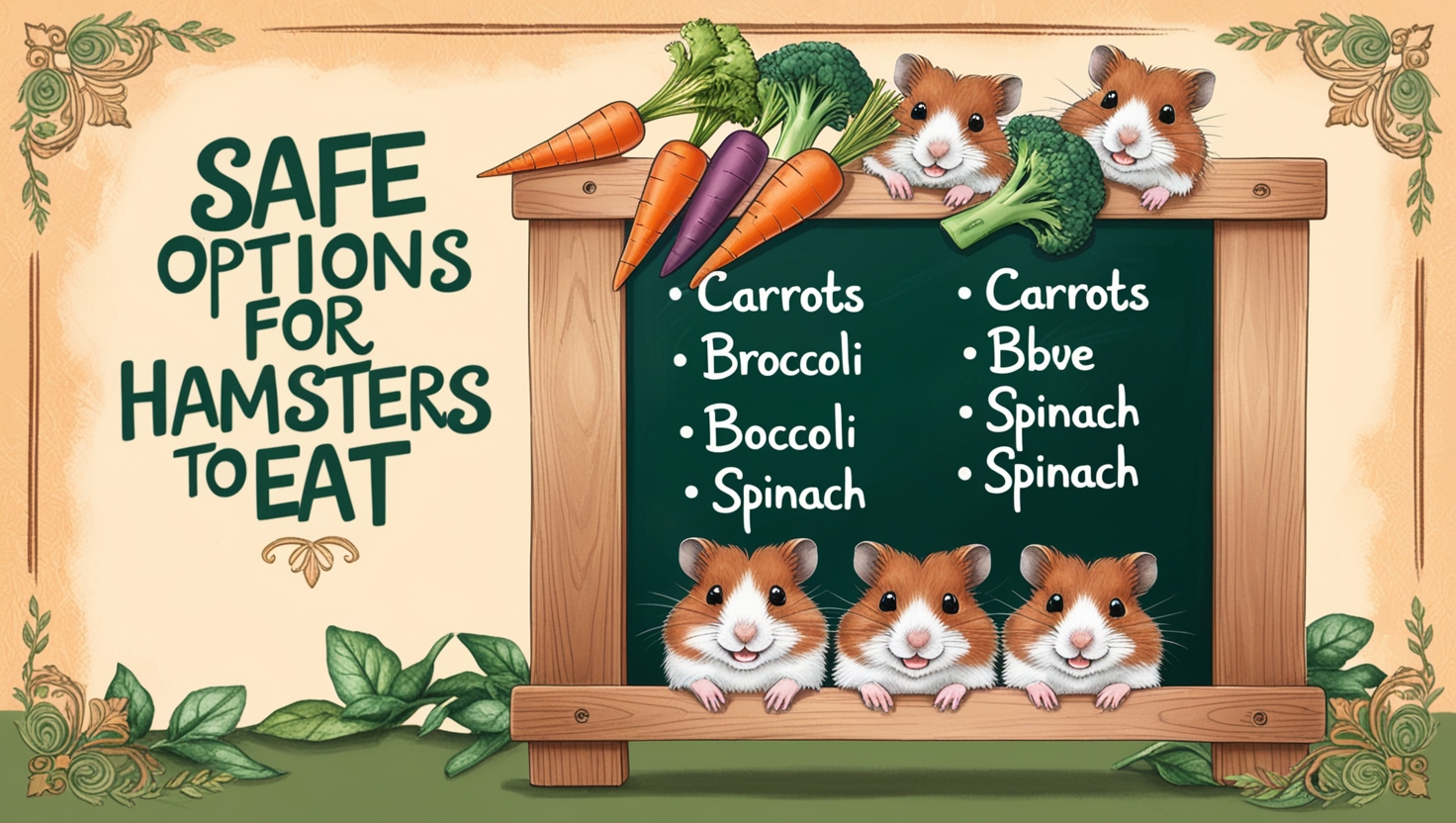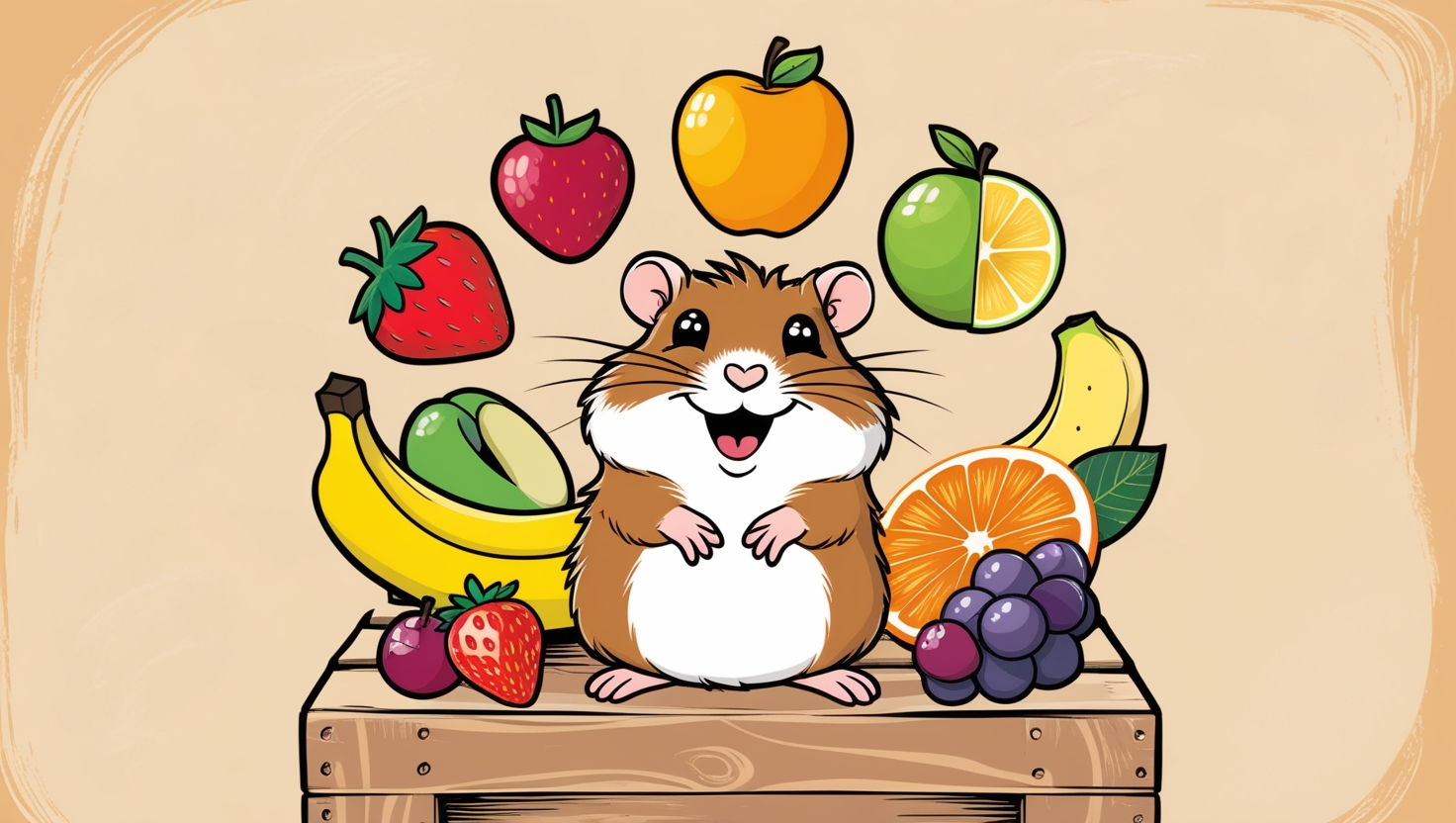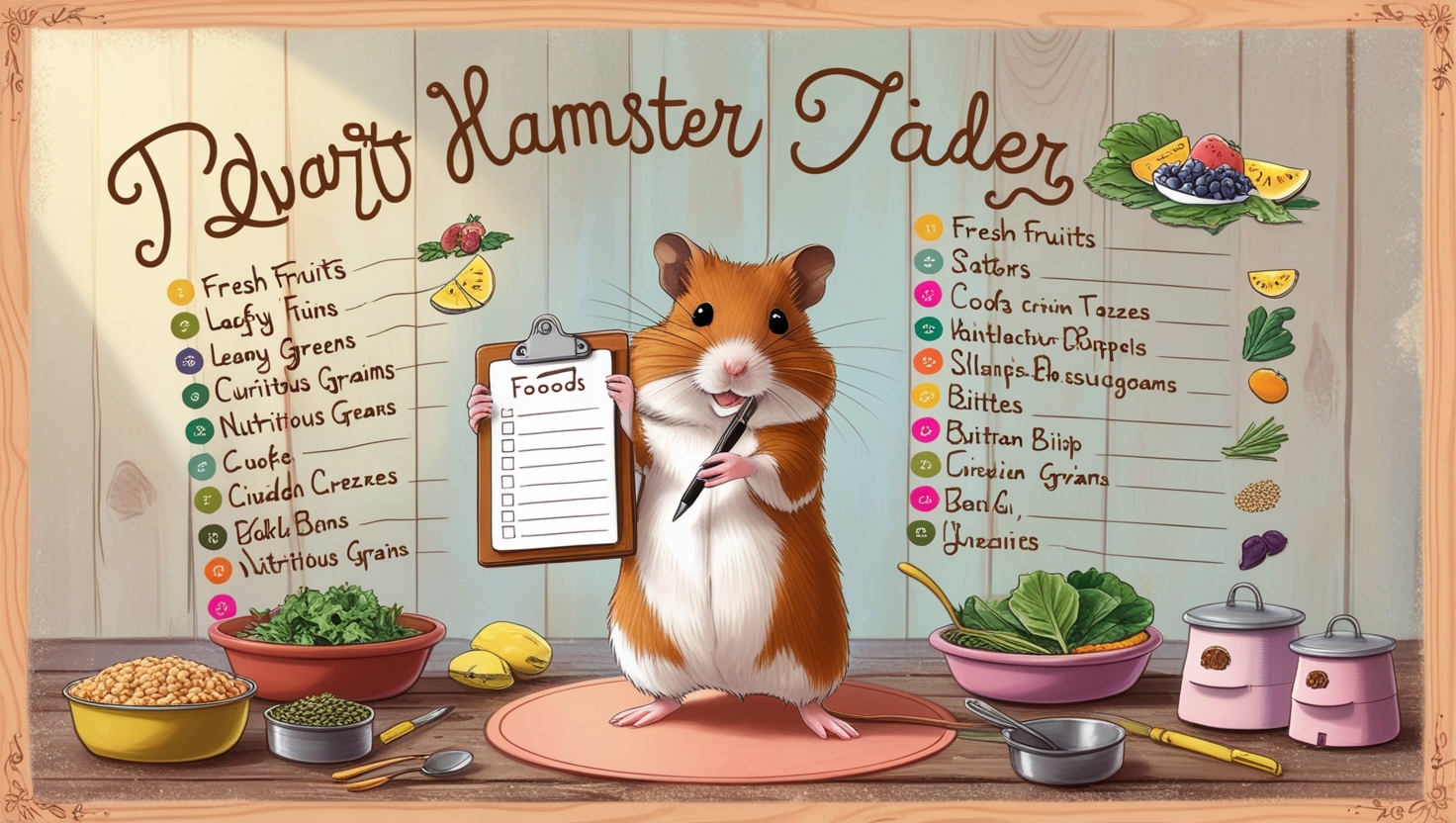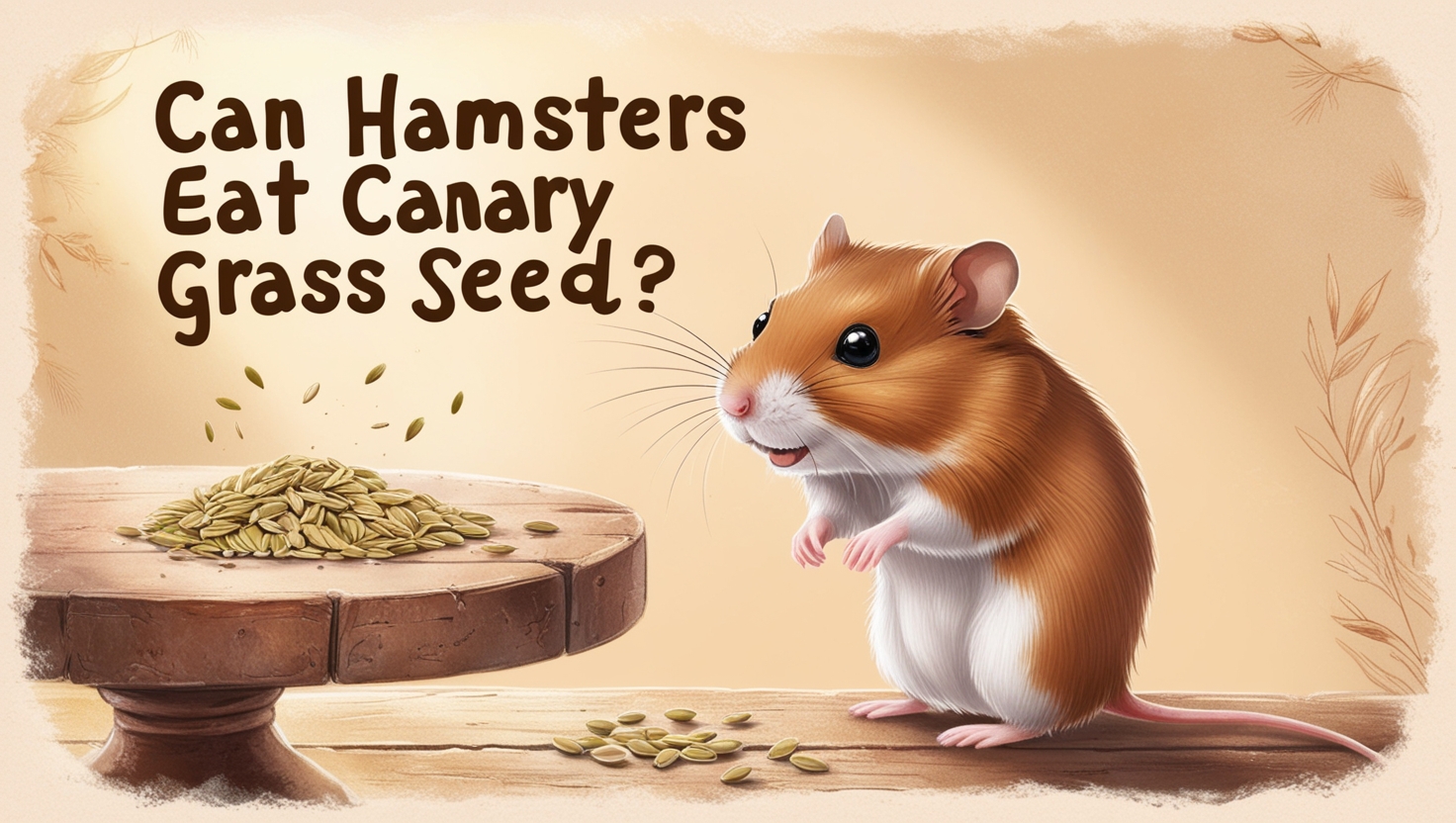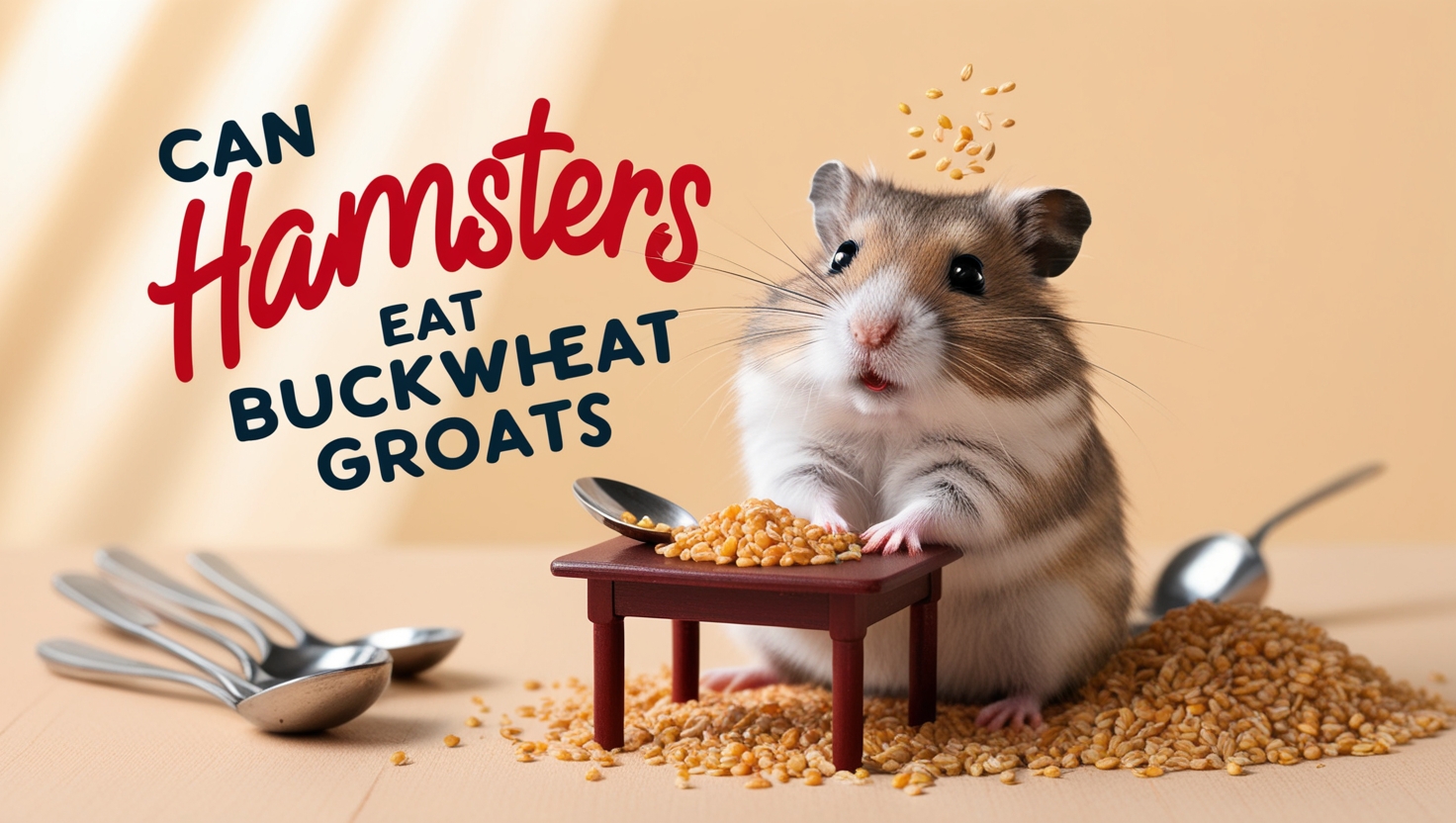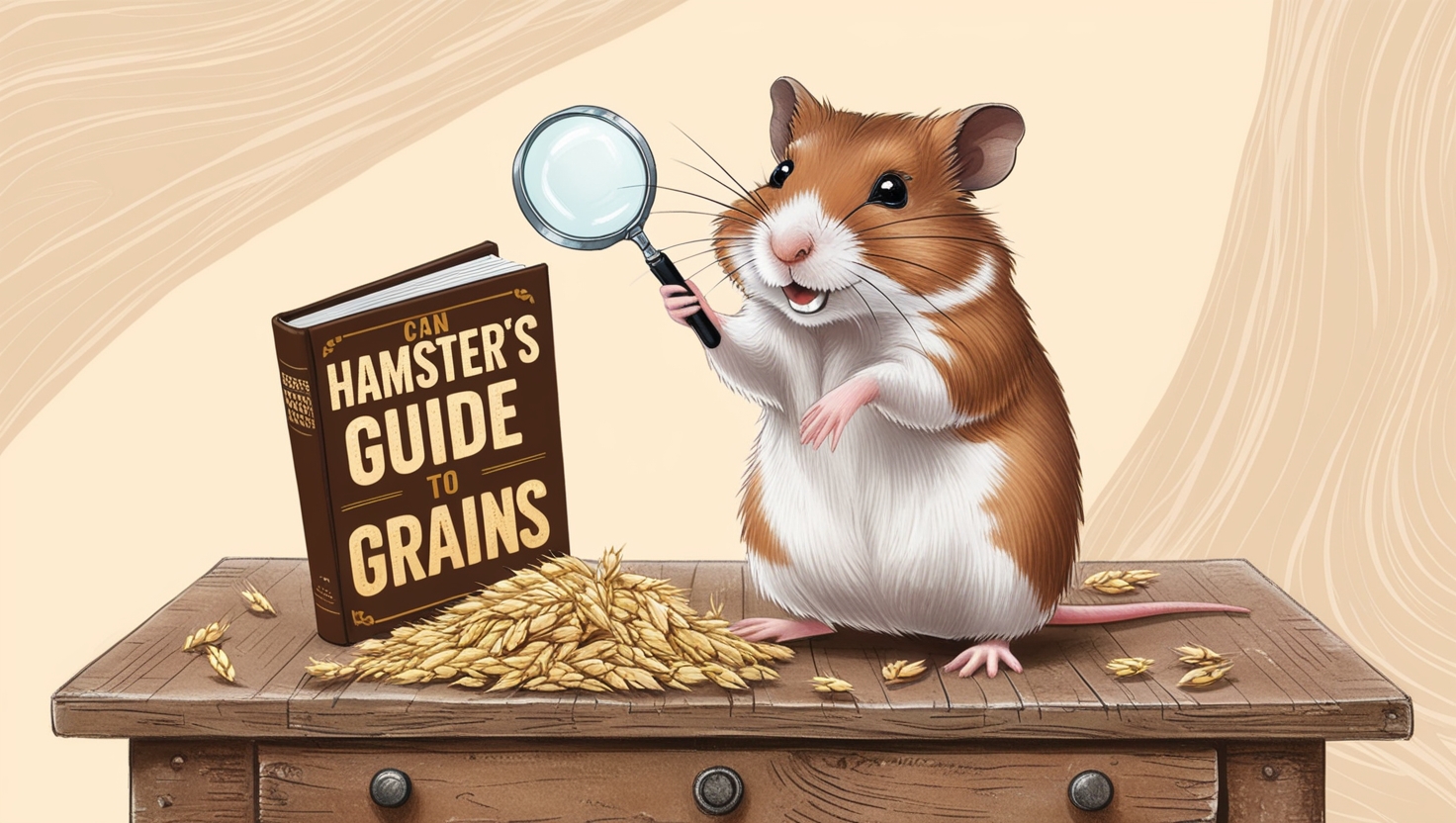Top 14+ Dangerous Foods For Hamsters – As a hamster owner, you’re probably wondering about avoiding dangerous foods for your little voracious cuties. They love the occasional treat – don’t we all? – but some things can be harmful to an animal, even more so to a small critter like a hamster. To help you out, we’re prepared a list of the dangerous foods you must avoid.
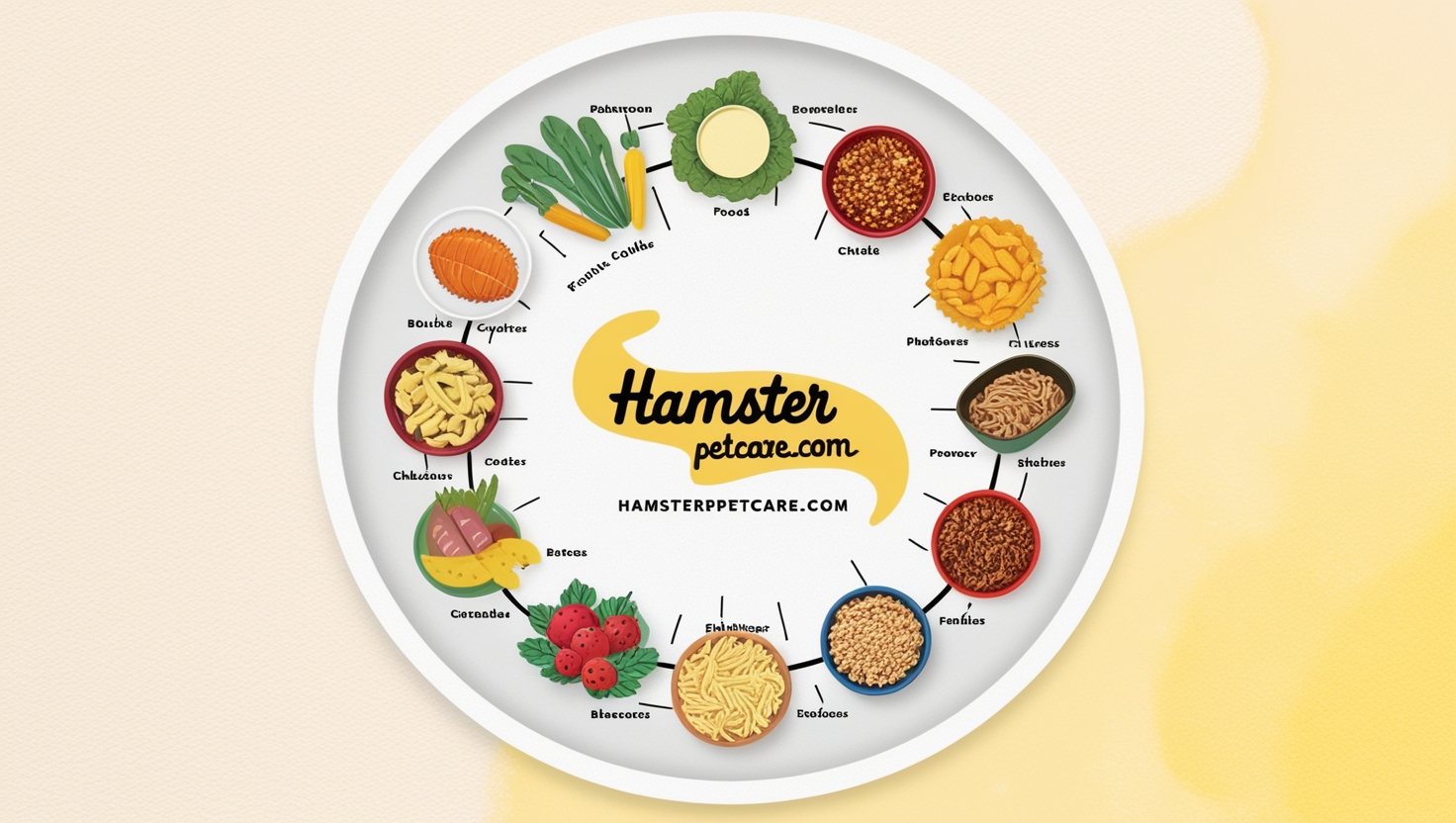
Top 14+ Dangerous Foods For Hamsters
Here’s a list of foods you should not feed your hamster (or feed in extreme moderation) –
- Bitter Almonds
- Unwashed vegetables
- Black/white Pepper (the seasoning type)
- Garlic
- Onions
- Tomatoes
- Potatoes
- Beans
- Processed sugary foods
- Junk food (snacks)
- Peanuts
- Fatty meats
- Raw rhubarb
- Chocolate
Surprised by some of these? We were too. Keep reading to learn which of these can be fed in moderation and which are absolutely big no-no’s, and to see why an innocent looking lettuce or celery could, in fact, harm your hamster.
Which Foods Are Harmful To Hamsters – And Why
A wild hamster’s diet is made of vegetables, roots, some nuts, insects and even small lizards when they can catch them. In other words, hamsters are omnivorous and need a varied diet to stay healthy.
Owners of pet hamsters should rely on high-quality commercial hamster pellets to provide their family pet with a balanced nutrition.
Trying to diversify your hamster’s diet is not necessarily a bad idea. Diversity is good – for a hamster’s health and general well-being. As long as you make sure most of your hamster’s diet is balanced (usually by means of providing a quality hamster-specific commercial food), adding fresh fruit and veggies is a great idea.
However, once you go beyond commercial food and treats, you need to pay special attention to what it is you’re giving your hamster. Feeding the wrong foods can definitely be risky for the well-being of your pet.
A Note About Quantities
Even when feeding a seemingly safe food as a treat, make sure you limit the quantity. These are goodies and should be limited to up to 5% of your hamster’s diet – the rest of it should be made up of quality well balanced hamster food.
Pay special focus on fruits of all kinds. Fruits are high in sugar content and while they provide important nutrients, they should only be fed in very small amounts. Even a whole grape is too large for your hamster.
As a rule of thumb, limit fruit and other treats to approximately half-a-teaspoon worth, no more than 2-3 times a week.
Dangerous Foods For Hamsters
If you’re already feeding your hamster the foods on this list, we recommend you stop doing so immediately. While not every food is fatal, they’re all a bad choice of snack for your furry friend.
Bitter Almonds
If you obtain bitter almonds, the consequences could be deadly. These almonds contain emulsin, an enzyme, that produces essential oils, cyanide, and blood sugar. Compared to nice almonds, bitter almonds have 42x the cyanide. In case your hamster eats too much cyanide, it’ll kill them.
Unwashed Vegetables
It doesn’t matter the type of veggie we’re discussing here. Even if they’re the vegetables your hamster should be eating, like cucumbers, carrots, broccoli, cauliflower, or chicory, if they’re not clean, your hamster shouldn’t keep these things.
Like everyone else wouldn’t eat fruits or vegetables without cleaning them first, your hamster deserves the same concern. There’s always the chance of pesticides engaging in their system. Sometimes bacterial strains like salmonella can complete via unwashed produce, too.
Peppers, Garlic, And Onions
You may already know, most vegetables are a-okay for your hamster to take, until, we’re discussing garlic and onions.
How come this? They are spicier vegetables. As for onions, these vegetables contain a material known as N-propyl disulfide. This may impact the red bloodstream cells of the hamster.
For actual peppers – some types have varying examples of spiciness. Avoid those no matter what. As for nice peppers, such as bell peppers, they’re best consumed in moderation. They may be acidic and can annoyed a hamster’s sensitive system if consumed in high quantities. And be sure you lose the seeds and stalks first.
Tomatoes
Another veggie (alright, technically it’s a fruit) that can harm your hamster is the humble tomato. Although it’s sweeter than most vegetables, tomatoes are indeed quite acidic. In case your hamster were to chew on an excessive amount of one, they’d finish up with diarrhea.
Now, tomatoes, when fed in really small quantities, are permissible. Whenever we say smaller amounts, we imply half a single teaspoon.
It’s also advisable to avoid ever making your hamster consume the leaves of the tomato. They are toxic and therefore can be fatal if consumed, even in small amounts. Because of this alone, you might like to omit tomatoes from your hamster’s diet completely.
Potatoes And Beans
These starchy foods may bind us, humans, up, however they will do the precise reverse to hamsters. Instead, the hamster should come down with diarrhea. When severe enough, everything diarrhea can cause dehydration.
In hamsters, extreme dehydration can kill. Your hamster’s eye can look sunken, they’ll be poor and slow, plus they won’t want to consume if they’re dangerously dehydrated. You may even notice their pores and skin loses its elasticity if touched or pinched.
A very important thing you are able to do is take your hamster to an amazing animal veterinarian if you see your hamster is displaying indicators of dehydration, as by enough time it is medically apparent, it’s very severe as well as your hamster likely needs liquid support.
Also, if still left raw, potatoes and their tops can be toxic to hamsters. This will not go for prepared potatoes, nevertheless, you should always take away the skins merely to be safe.
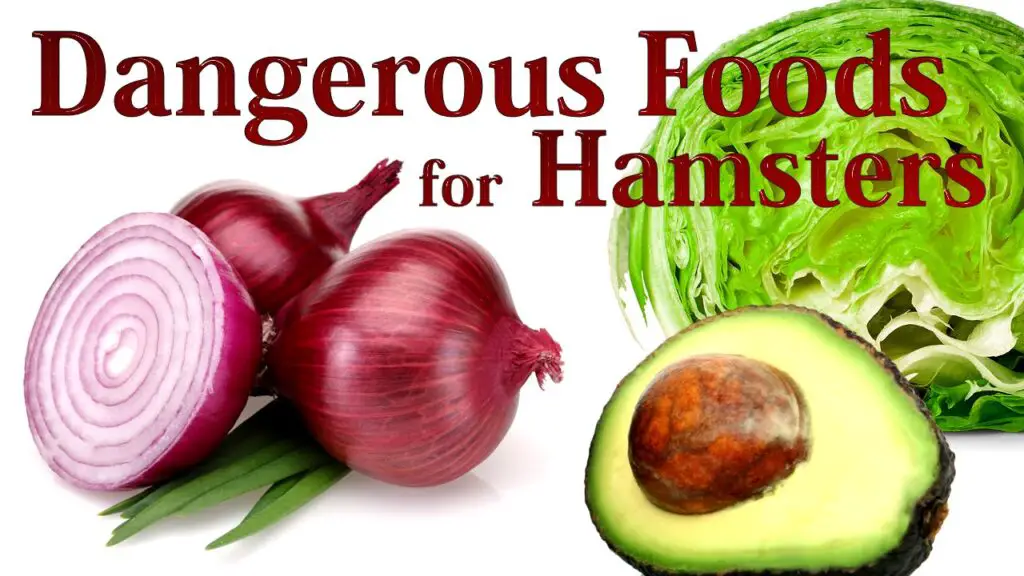
Processed Sugary Foods
Some fruits & vegetables you may feed as treats to your hamster have naturally-occurring sugar in them. Included in these are skinless nice potatoes, apples, bananas, and so on. Those are fine to provide to your hamster. It’s processed sugars you will need to be concerned about.
Just like refined sugars can enhance our urges and increase our waistlines, they don’t do our hamsters any favors, either. Eating them can cause your hamster to get weight, which may be harmful to its health. Their tooth may also be adversely affected, as your hamster’s chompers could rot. You understand, similar to ours do if we enjoy too much glucose.
When you should avoid directly feeding your hamster any sugary chemicals, double-check the packaged foods you give it. Understand that sugar can masquerade as much different titles, including:
- Monk fruit
- Sucanat
- Panocha
- Golden syrup
- Treacle
- Diastatic malt
- Galactose
- Maltrose
- Sucrose
- Fructose
- Glucose or glucose solids
- Corn syrup
- Evaporated cane juice
- Fruit juice and fruit juice concentrate
- Brown rice syrup
In the event that you see some of those substances (as well as whatever leads to “sugars”) on the ingredients set of your hamster’s food, it’s time to change brands.
Chips And Other Junk Food
We hope this is going without saying, however your hamster will not want chips, candy, cakes, cookies, or any other junk food. The same applies to your cats, pups, and other home domestic pets. The high sugars and/or sodium content in these food types can result in annoyed stomachs, diarrhea, and dehydration.
There’s also the processed elements, that are no good. These may be hard to break down for little stomachs like your hamster’s. It’s fine if you yourself want to partake in a few processed foods, but keep it from your pet!

Peanuts
Peanuts will often include a toxin known as aflatoxin. The Aspergillus parasiticus and Aspergillus flavus will be the two fungi accountable for making aflatoxins. The fungi choose humid and warm conditions to thrive.
Relating to Dr. Alicia McLaughlin, DVM, aflatoxins can be there in small amounts in virtually any peanut-product you feed. These smaller amounts are enough to kill a hamster. Even though you only give food to a small little bit of a peanut, it could be fatal IF it happens to contain aflatoxins.
Even human-grade peanuts can contain smaller amounts of aflatoxins, and a little amount for one is a big amount for a hamster. Nourishing peanuts to small pets is similar to playing Russian roulette – the majority of the time you’ll be fine, but there’s always an opportunity that maybe it’s deadly.
Fatty Meats
While it’s ok to give food to insects, beef is not really a natural food for hamsters. Relating to Dr. McLaughlin, the chance of obesity, cardiovascular disease, liver organ disease, and kidney disease warrants staying away from meats in your hamster’s diet.
You could attempt smaller amounts of poultry or salmon on rare events – but even those aren’t necessary.
Raw Rhubarb
Unless you’ve found this out the hard way personally, then you will possibly not know that you’re not likely to eat raw rhubarb. Usage can sometimes business lead to uterine contractions, watery diarrhea, and intestinal pain. In the event that you continue steadily to eat it, you could later get an irregular heartrate, bone reduction, and muscle weakness.
This is exactly what happens when people eat rhubarb, incidentally. If the veggie can do this much harm to us, then why give it to your hamster? Any area of the rhubarb-be that the stalk, the ends, or the leaves-should not be fed to your hamster raw. While prepared rhubarb is okay in small amounts, you don’t want to risk it?
Chocolate
We already mentioned that your hamster should be restricted from sugary treats, but we wanted to mention chocolate specifically. Dark chocolate is the worst offender, but obviously you should not feed your hamster any kind of chocolates.
Why is that? Chocolate has theobromine, a bitter alkaloid that naturally occurs in cacao plants. It’s also in the kola nut and tea plant leaves (so keep your hamster away from those, too). In hamsters, theobromine can lead to circulatory issues.
If you’ve had a cat or dog in the past, you already know not to give food to them delicious chocolate. Extend this practice to your hamster as well.
Have A Healthy, Happy Hamster!
As the above information will be a lot to keep an eye on, it’s imperative you need to do so for your hamster’s health. In the event that you don’t feel safe nourishing your hamster something, then don’t get it done.
Keeping them on a straightforward diet of pellets and limited fruits & vegetables won’t trouble them whatsoever. Actually, it’s most likely the best answer for both family pet and owner! Don’t neglect to learn here more in what treats it is possible to give your hamster.
This post was written with help from Dr. Alicia McLaughlin, DVM. Dr. McLaughlin received her DVM level from Oklahoma Condition University and is currently an associate vet at THE GUTS for Parrot and Exotic Pet Medication in Bothell, WA. Dr. McLaughlin is an associate of the American Veterinary Medical Association as well as the Association of Amazing Mammal Veterinarians, among other professional organizations.
Your hamsters’ health depends upon what they eat which is the goal of the post. But imagine if you’re concern about the diseases these hamsters may have. Check out 7 Hamster MEDICAL ISSUES Every Owner Must Know About.
Also, you must know the limitations of what your dog must consume, Have a look at How exactly to Feed Hamsters.
FAQs
What foods are dangerous for hamsters?
Many common foods that we enjoy are toxic or harmful to hamsters. Here are some of the most dangerous:
Chocolate: Contains theobromine, which is toxic to hamsters.
Avocado: Contains persin, which is toxic to hamsters.
Onions and Garlic: Can cause digestive upset and anemia.
Salty Foods: Can lead to dehydration and health problems.
Sugary Foods: Can lead to obesity, dental problems, and other health issues.
Dairy Products: Hamsters are lactose intolerant.
Raw Meat: Can carry bacteria that can be harmful to hamsters.
Alcohol: Toxic to hamsters.
Caffeine: Toxic to hamsters.
Processed Foods: These are often high in sugar, salt, and fat, and can be harmful to hamsters.
Seeds from fruits like apples, peaches, and cherries: Can be toxic to hamsters.
What are the signs of a hamster that has eaten something toxic?
Signs of poisoning in hamsters can include:
Vomiting:
Diarrhea:
Lethargy:
Loss of appetite:
Tremors:
Seizures:
Difficulty breathing
What should I do if I think my hamster has eaten something toxic?
If you suspect your hamster has eaten something toxic, you should contact your veterinarian immediately. They can advise you on the best course of action, which may include inducing vomiting or administering activated charcoal.
How can I prevent my hamster from eating dangerous foods?
Here are some tips to prevent your hamster from eating dangerous foods:
Keep all food out of reach of your hamster.
Never feed your hamster table scraps.
Only offer your hamster safe and appropriate treats.
Be aware of the ingredients in commercial hamster treats.
Research the safety of any new foods before offering them to your hamster.
Remember: It’s always best to err on the side of caution when it comes to your hamster’s diet. If you have any questions about what foods are safe for your hamster, consult with your veterinarian.


